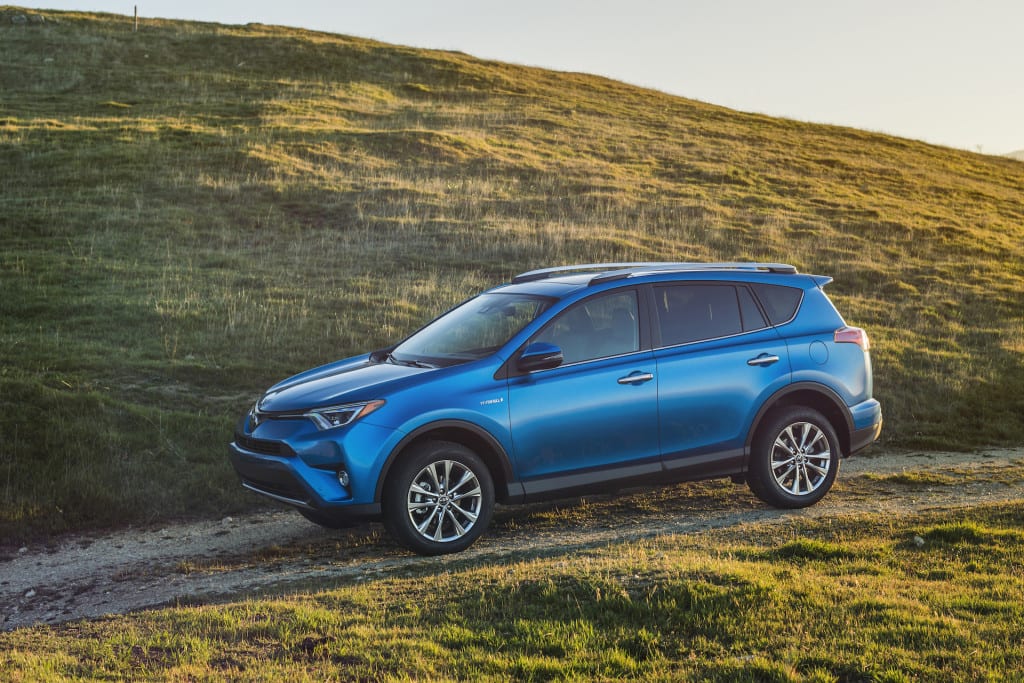The Toyota RAV4 is one of the most popular compact SUVs of all time. This vehicle sells well in many markets, thanks in large part to its stylish good looks, interior space, above average fuel economy, and wealth of features.
Many people are unfamiliar with the fact that the RAV4 has been around for more than 20 years at Portsmouth Toyota dealers.
Toyota debuted this vehicle in Europe and Japan in 1994. One year later it reached North America. Since day one, consumers have been enamored with everything this SUV has to offer. And as of yet, there is no reason to believe this is going to slow down.
The Early Days
Early on, the RAV4 was designed to give consumers a vehicle that provided all the benefits of an SUV, without being too large. In addition to full-time four-wheel drive, Toyota put a lot of time into ensuring a large cargo capacity and higher visibility.
In 1994, there were not many compact SUVs on the road. However, once the RAV4 picked up steam, it was not long until the competition took notice. Soon enough, both Subaru and Ford got in on the action. Shortly thereafter, other manufacturers, such as Honda, did the same.
A Big Win for Toyota
Many car companies have to produce multiple vehicles in a segment in order to keep up with the competition and take a large enough piece of the market. This has not been the case with Toyota. Instead, the RAV4 is the only compact SUV offered by the Japanese automaker.
While the RAV4 has changed many times over the years, one thing hasn’t: Toyota’s dedication to ensuring that it remains one of the highest selling SUVs in the compact market.
RAV4: 1994 – 2000
The first generation RAV4, commonly known as the XA 10 series, remained in Toyota’s lineup for six year. It shared the same platform as the Corolla and Carina, two very popular compact cars offered by the company.
The first generation RAV4 was offered in both a two and four door model. While the two door model is no longer available, it was popular at the time.
In the United States, the first generation RAV4 had a straight-four engine that pushed out 120 hp. This was not the most powerful engine on the road, but it was more than enough to get the small SUV up to speed in a hurry.
For those who did not want or need all-wheel drive, the vehicle was also available in a front-wheel drive platform. Furthermore, it came with either a four-speed automatic or five-speed manual transmission.
In 1997, the RAV4 got one of its first big breakthroughs when Automobile Magazine named it Automobile of the Year. This is when consumers really began to take notice.
When 1998 rolled around, Toyota excited the market by making some key changes to the RAV4. In addition to a fresh exterior, its engine gained another seven horsepower.
RAV4: 2000 – 2005
The second generation RAV4 was dubbed the XA20 series. Despite the success of the first generation model, this vehicle was better in almost every regard.
One of the biggest changes was the number of standard and available features. For example, anti-lock brakes, air conditioning, and electronic stability control became standard. Additional options were also made available, such as a six speaker CD stereo (which was a big deal at the time),
By the time the 2004 model hit the market, Toyota once again made some changes. The company thought it was time for a styling update as well as a new engine. In the United States market, the previous 2.0 L engine was upgraded to a new 2.4 L engine. This engine put out 161 horsepower and 162 lb-ft. of torque, making it the most powerful RAV4 to date.
RAV4: 2005 – 2012
In 2005, the second generation RAV4 was retired. It was then that Toyota rolled out the third generation compact SUV, known as the XA 30 series. With an all new platform, the company once again outdid itself.
Although this model was available for seven years, Toyota did not keep it the same the entire time. For example, the 2009 model year was given a mid-cycle refresh that impressed many consumers spanning a variety of markets. New features were brought to life, including a new four cylinder engine as well as some minor changes to the rear and front end of the vehicle.
In 2011, Toyota made some additional changes to the exterior.
RAV4: 2013 – Current
Known as the XA 40 series, the most recent generation of the RAV4 is clearly the best. The fourth generation debuted at the 2012 Los Angeles Auto Show. From day one, this new generation SUV has been a top seller for Toyota.
Since hitting dealer lots in January 2013, it has kept pace with the rest of the compact SUV market. This is due in large part to its variety of engine choices, including both a 2.0 and 2.5 litre four-cylinder. There are three transmission options: 6-speed automatic, CVT automatic, and 6-speed manual.
While the previous generation RAV4 had a six-cylinder engine, Toyota retired this for the fourth generation. Instead, it went with an all inline four cylinder lineup. Performance remained the same, but gas mileage improved. This is a definite win-win for drivers.
Update: The 2016 RAV4
Toyota has done an excellent job making changes to the RAV4 when necessary. And we can expect more of the same for the 2016 model. While it will be similar to its predecessor, the automaker has decided to make a few important changes.
In addition to a fresh exterior, the new model will feature silver rear and front skid plates. This gives the SUV just enough “bling” to attract a younger audience.
The real change, however, is the addition of a hybrid RAV4. Toyota is leading the hybrid charge, and you can be rest assured that the RAV4 will fit in nicely. While the company has yet to release detailed information on the hybrid model, there is no denying that the gas mileage will be among the best in the industry.
Conclusion
The Toyota RAV4 has long been a top performer. The compact SUV market is competitive, but this model has been able to outdo the competition for more than 20 years. With the 2016 model coming soon, it is in position to stay on top well into the future.




